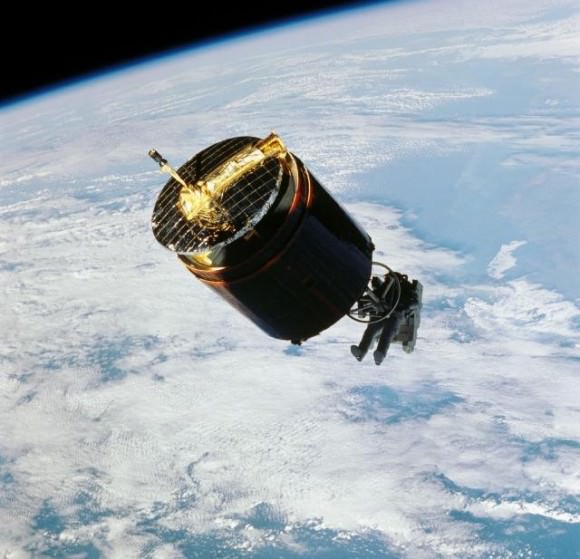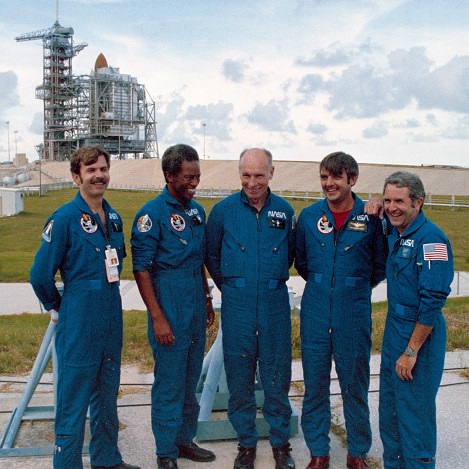When Dale Gardner smiled for this preflight picture somewhere around 1983, there was another mission on his horizon: picking up a broken satellite … using a jet backpack. And while we believe that all astronauts have an element of derring-do to them, strapping on a device to bring you away from the shuttle’s safety must have taken a special kind of confidence in your equipment.
Gardner, who died Wednesday (Feb. 18) of a brain aneurysm at the age of 65, was one of a handful of astronauts who used the Manned Maneuvering Unit. In his case, it was to retrieve the malfunctioning Westar 6 satellite. Listen to his account of the story (around 9:25 here), however, and you’ll hear a man more focused on favorable sun angles and learning from the experience of another crewmate on STS-51A.
“I essentially just had a lot of fun on Flight Day 7,” he said in the video. And as the sequence of pictures below shows you, technical as the procedure was, the view must have been breathtaking.

Gardner, who was born in Minnesota, joined the U.S. Navy after graduating from the University of Illinois in 1970. He earned his wings the following year, then made his way through assignments to the prestigious Naval Air Test Center in Patuxent River, Maryland (the training ground for many future astronauts).
There, he participated in the development and evaluation of the Grumman F-14 Tomcat, an aircraft eventually used in Operation Desert Storm in the 1990s, among many other missions. Gardner was in fact part of the first F-14 squadron from none other than the USS Enterprise (the aircraft carrier, not the Star Trek ship.)
Gardner came to NASA as part of an immense astronaut class in 1978 that was later known as the “Thirty-Five New Guys” (which, it should be noted, also included six women, a first for the agency). With shuttle flights about to begin — a program that was then expected to launch dozens of flights a year — there appeared to be plenty of room for new recruits. Gardner’s first space-based assignment came upon STS-8, which flew in 1983 to deploy an Indian satellite called Insat-1B.
But it was for STS-51A’s eight-day mission in November 1984 where Gardner will be best remembered, because he did this:

The shuttle mission was packed with satellite activity, with crew members deploying the Canadian communications satellite Anik D2, and U.S. defense communications satellite Leasat-1. Then it was time to pick up a couple of broken satellites to haul back to Earth.
Using a sort of grapple tool and his MMU, Joe Allen successfully retrieved Palapa-B2 on Flight Day 5. After Allen told his crewmates that he had some trouble with the sun in his eyes, Gardner used that information on his own MMU trip to pick up Westar 6 two days later. Specifically, Gardner and the crew had him approach in such a way that the shadow of the satellite fell across the astronaut, stopping the sun glare from becoming a problem.

Both satellites had been in improper orbits due to problems with motors, but Gardner and his crew nabbed them safely for a return back to Earth, allowing insurers to resell the satellites for separate launches in 1990. But Gardner had a parting gotcha before handing them back: he held up a “For Sale” sign that you’ve likely seen reprinted somewhere, as it’s among the most famous shots of the shuttle program.
Gardner returned to the Navy in October 1986 (almost a year after the shuttle Challenger explosion), where he joined U.S. Space Command and held several senior positions. He retired from the Navy in 1990 to work in the private sector.
His death this week from a brain aneurysm was said to be sudden, and prompted a Twitter comment from the Association of Space Explorers saying that it was “devastating news.”

